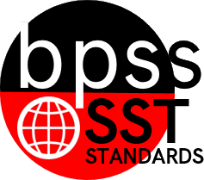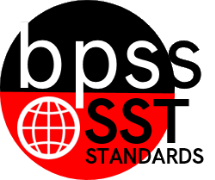SST-HS.3.02
|
High School SST Targeted Benchmarks
Standard 3: Economic Concepts
Students understand economic concepts and the characteristics of various economic systems.
Structures and Functions
SST-HS.3.02 Explain the role of money and the role of financial institutions in a market economy (e.g., basic functions of money, composition of money supply, role of banks and other financial institutions, federal reserve, credit savings).
|
Student Learning Targets:
Knowledge Targets
- I can understand the role of financial institutions.
- I can understand the evolution of money in the United States.
- I can understand the structure of the Federal Reserve System.
- I can recognize the advantages and disadvantages of using credit.
- I can explain a credit report.
Reasoning Targets
- I can explain the functions of money in our economy.
- I can analyze the role money plays in the economic system.(ie. functions and characteristics of money)
- I can analyze the different types of financial institutions. (ie. both bank and non-bank financial institutions)
- I can explain the role of credit in economic decision making.
- I can analyze the features of credit cards.
Proficiency Scale
| Score |
|
Description |
Sample Activity
|
| Advanced Proficient |
In addition to expectations of proficiency, the student provides consistent evidence of in-depth inferences and applications that go beyond what was taught and expected. |
- |
| |
3.5 |
In addition to score 3.0 performance, in-depth inferences, and applications with partial success. |
|
Proficient
|
“The Standard.” The student demonstrates no major errors or omissions regarding any of the information and processes that were end of instruction expectations.
Unit 5 Money Banking & the Federal Reserve
The student can:
-
describe the role money plays in the economic system (i.e. functions and characteristics of money).
-
describe the evolution of money in the United States.
-
explain the function of financial institutions. (ie. banks, credit unions, life insurance companies)
-
explain the function of the Federal Reserve System on businesses and individuals
Unit 6 Investing and Saving
The student can:
-
Explain the options available for developing a savings and investing plan for themselves
-
Compare/Contrast different investment and savings opportunities
-
Analyze financial information
Unit 7 Credit and Personal Finance
The student can:
The student exhibits no major errors or omissions.
|
- |
| |
2.5 |
The student demonstrates no major errors or omissions regarding the simpler details and processes (Score 2.0 content) and partial knowledge of the more complex ideas and processes (Score 3.0 content). |
| Progressing |
The student demonstrates no major errors or omissions regarding the simpler details and processes but exhibits major errors or omissions regarding the more complex ideas and processes (Score 3.0 content).
Unit 5 Money Banking & the Federal Reserve
The student can:
Unit 6 Investing and Saving
The student can:
-
Recognize the difference between savings and investing
-
Recognizes or recalls specific terminology, such as:
-
stocks, bonds, certificates of deposit, IRA’s, Roth IRA’s, pension, 401 K plan, DOW, NYSE, NASDAQ, bull market, bear market, etc...
Unit 7 Credit and Personal Finance
The student can:
However, the student exhibits major errors or omissions regarding the more complex ideas and processes.
|
- |
| |
1.5 |
The student demonstrates partial knowledge of the simpler details and processes (Score 2.0 content) but exhibits major errors or omissions regarding the more complex ideas and procedures (Score 3.0 content). |
| Novice |
With help, the student demonstrates a partial understanding of some of the simpler details and processes (Score 2.0 content) and some of the more complex ideas and processes (Score 3.0 content). |
- |
| |
0.5 |
With help, the student demonstrates a partial understanding of some of the simpler details and processes (Score 2.0 content) but not the more complex ideas and processes (Score 3.0 content). |
Resources
Websites
Vocabulary |
 BPS District Social Studies Standards Book
BPS District Social Studies Standards Book

 Standard 4:
Standard 4: